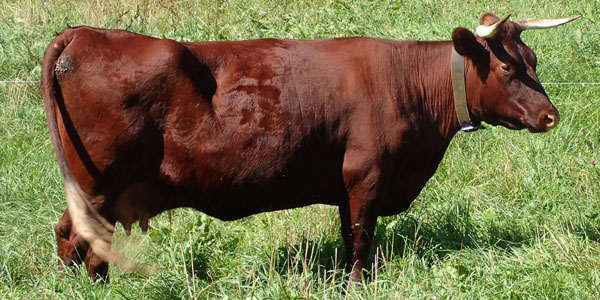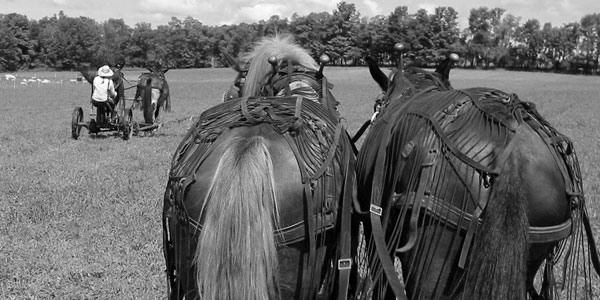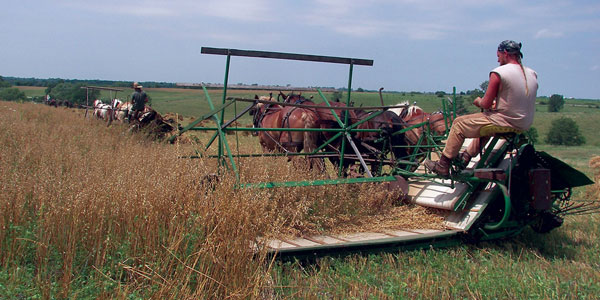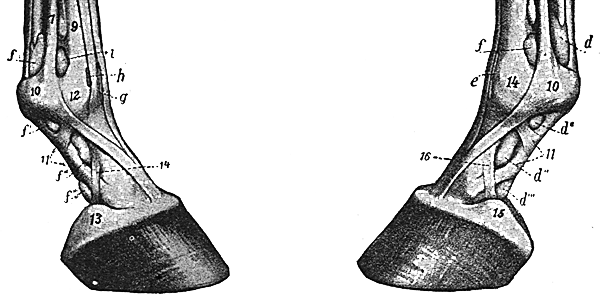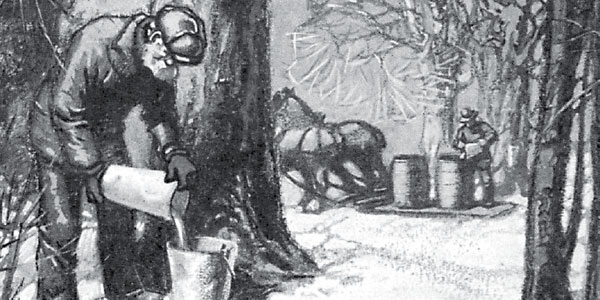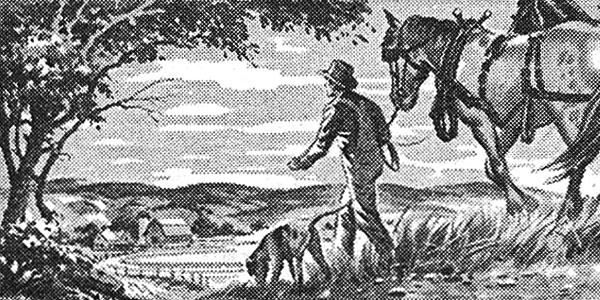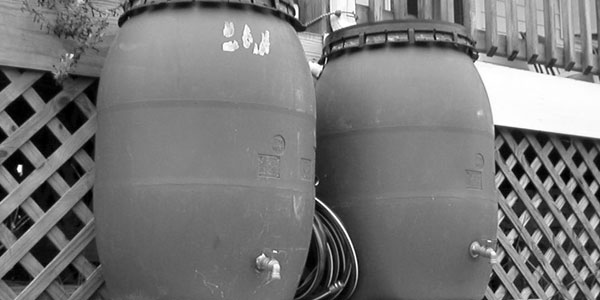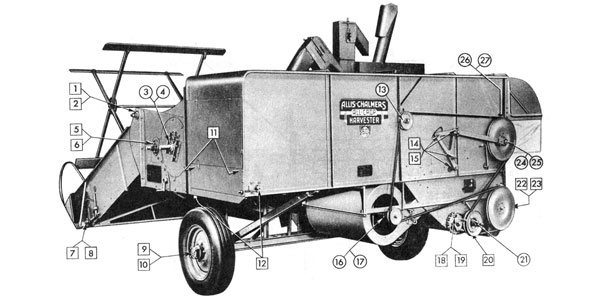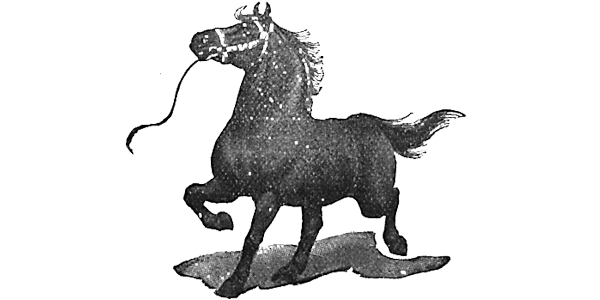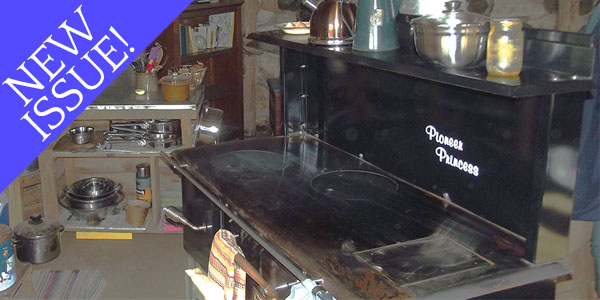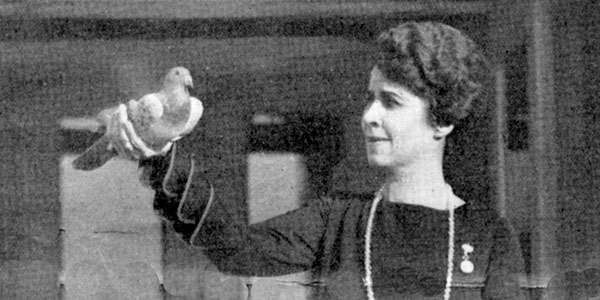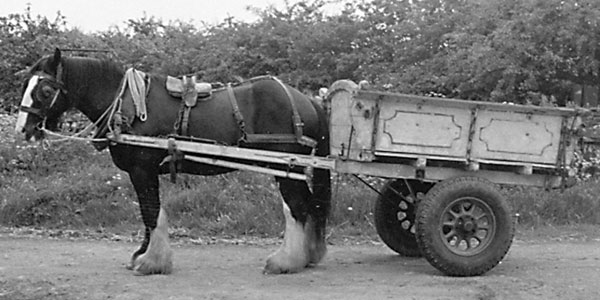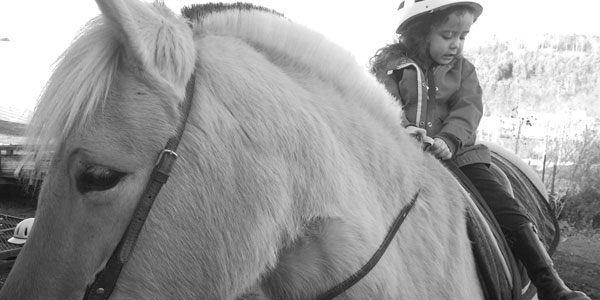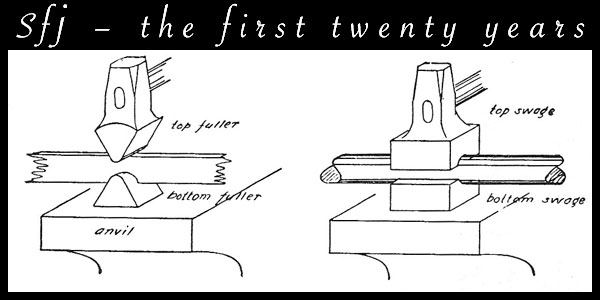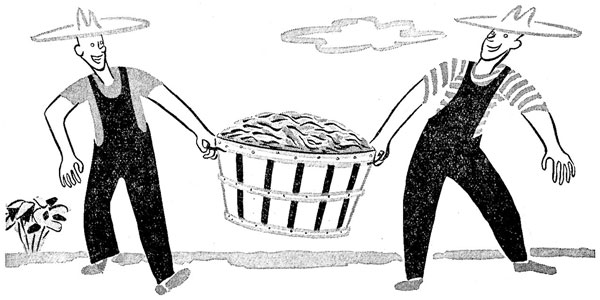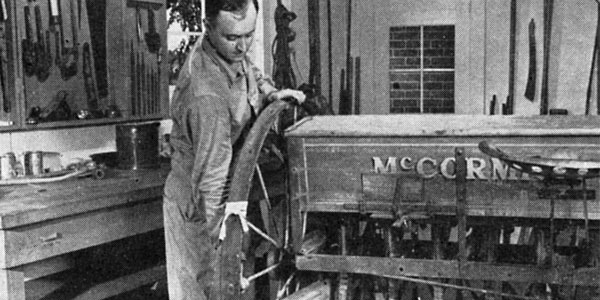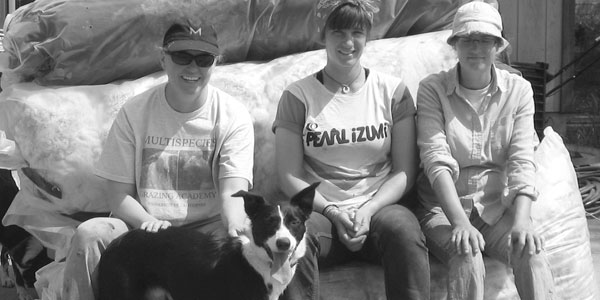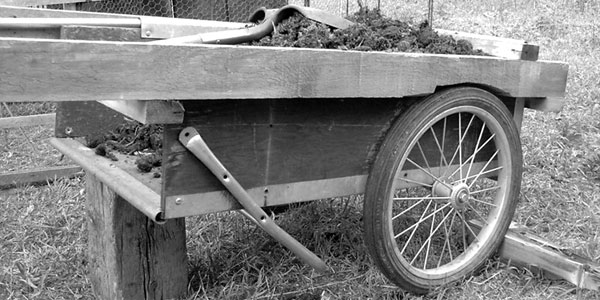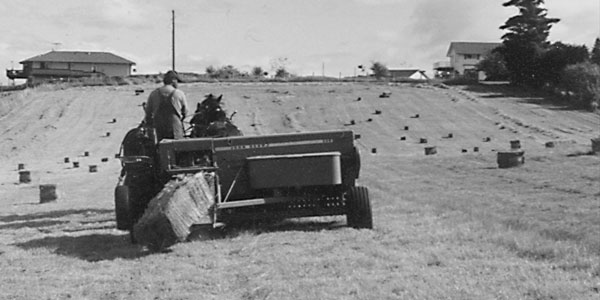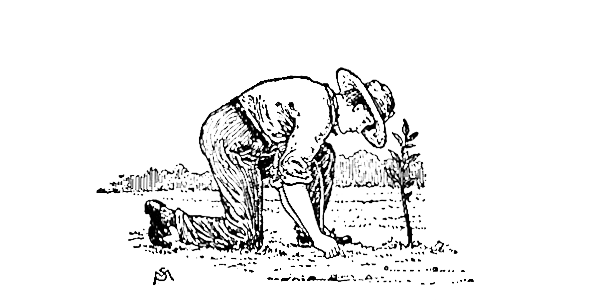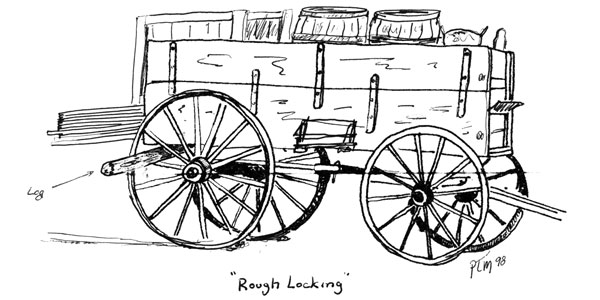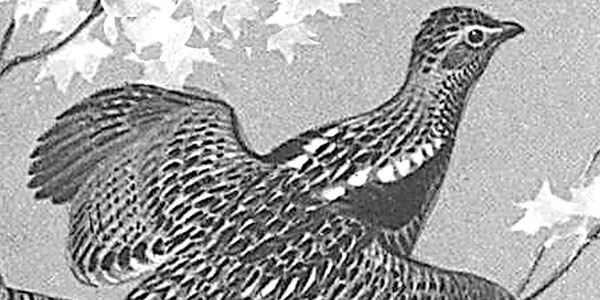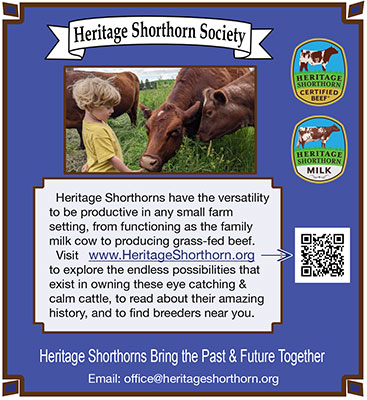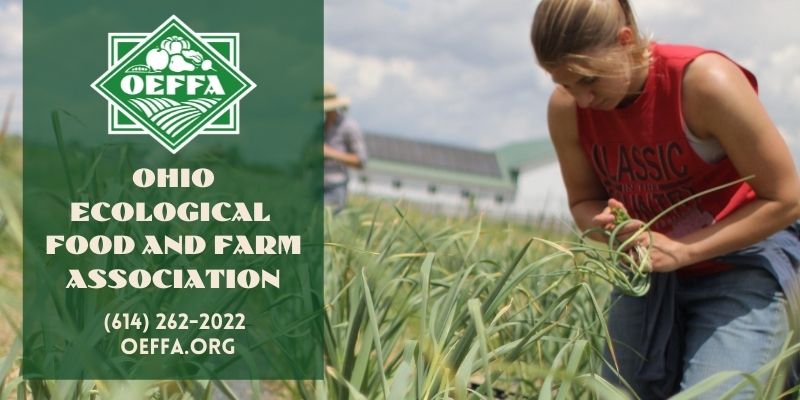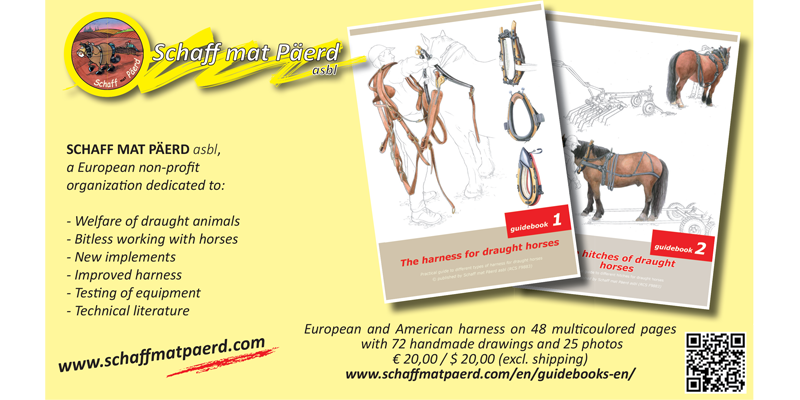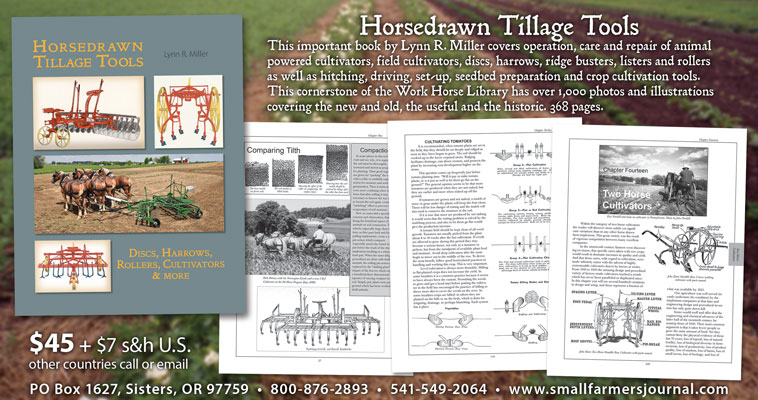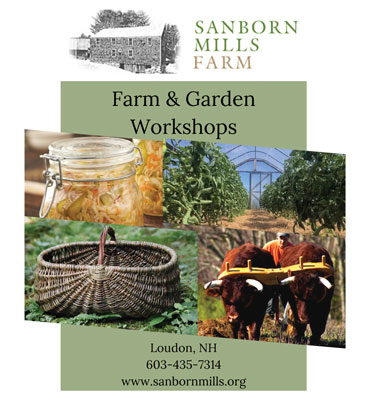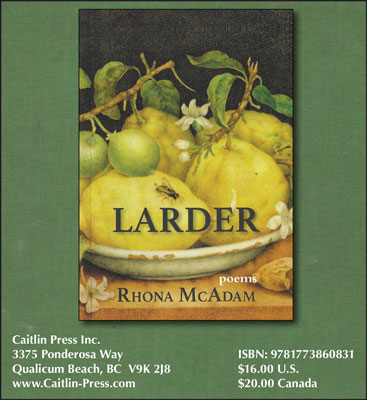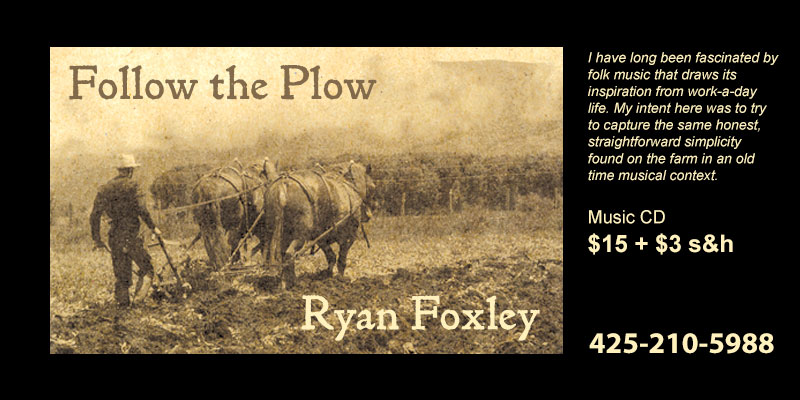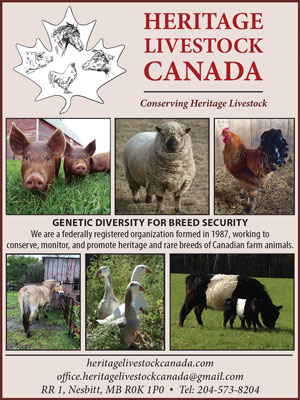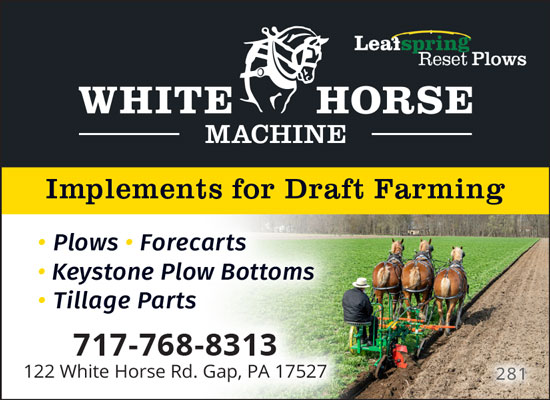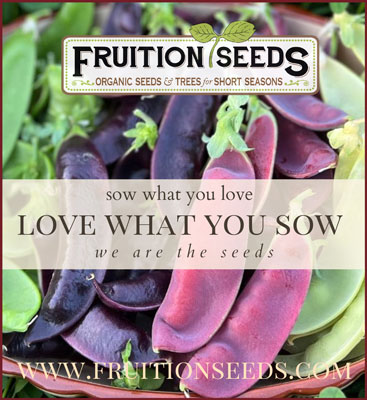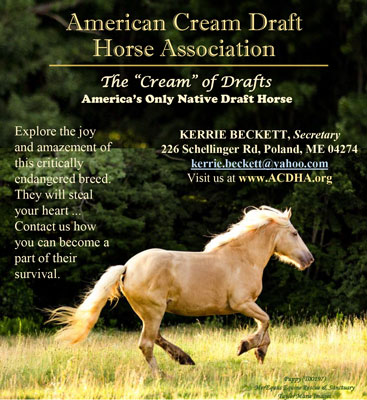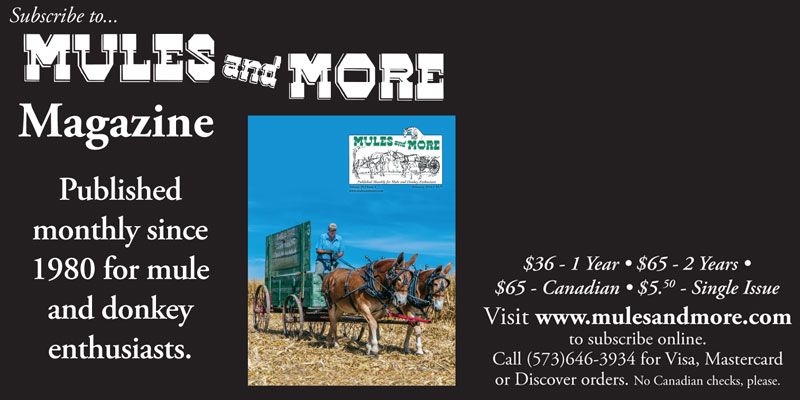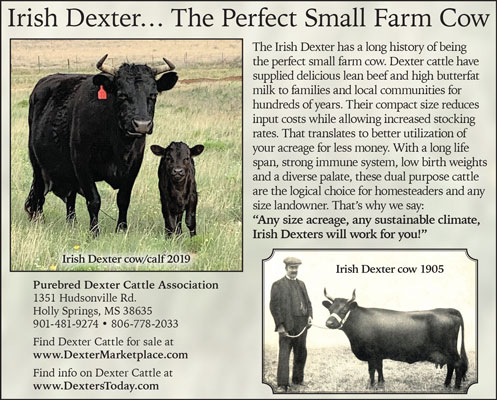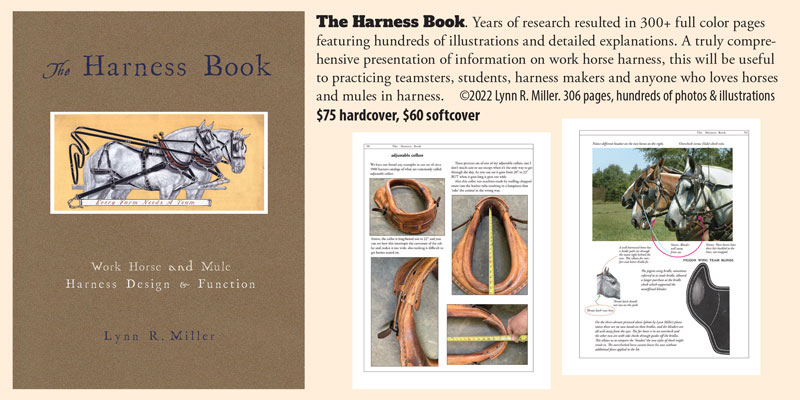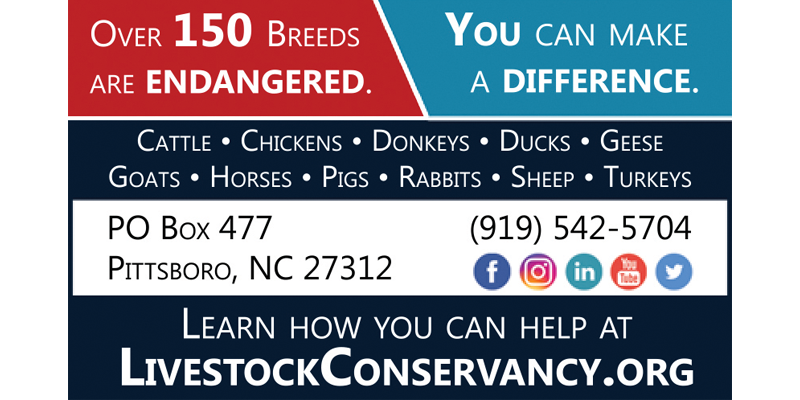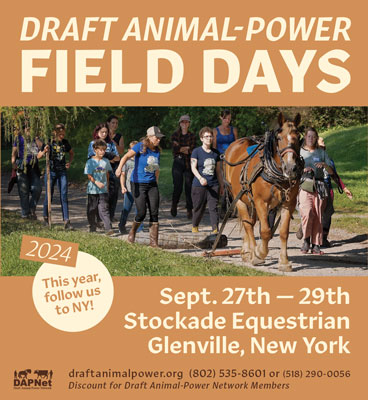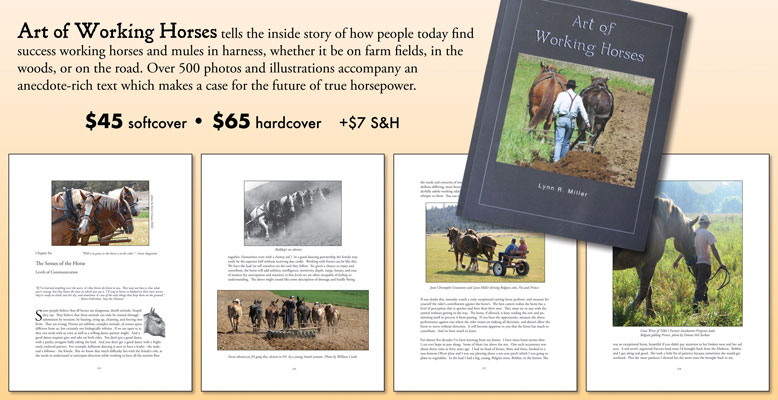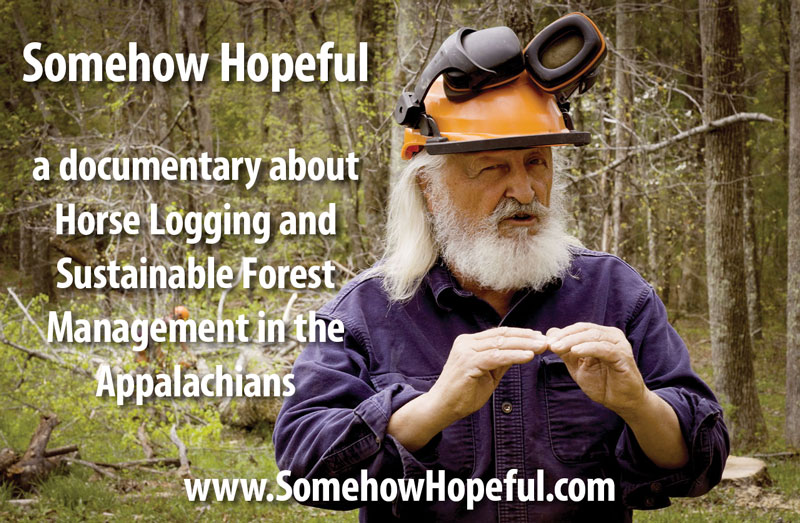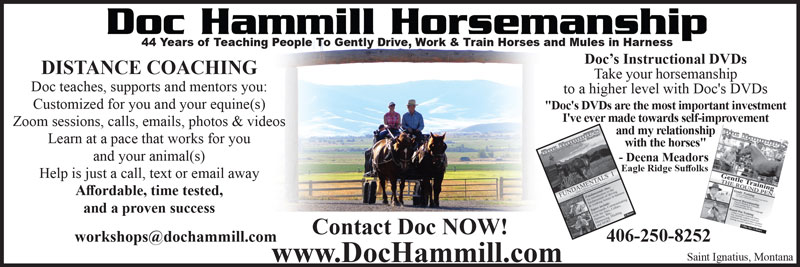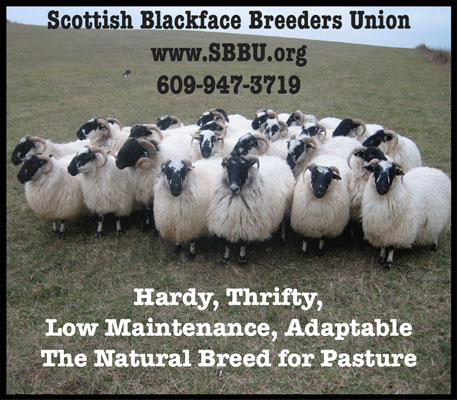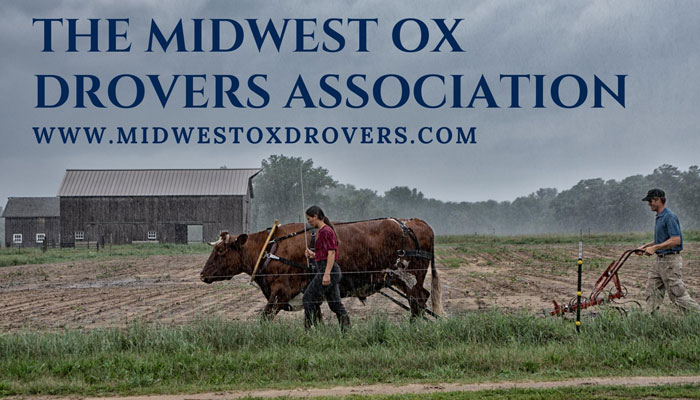MONDAY
April 15, 2024
Ground Driven PTOs
One of the ways tractors both gained and maintained their appeal is from the wider range of machinery they can power with the PTOs they carry. This definitely gave them the advantage over draft power. But is it going to stay that way? It may not have to be on a small farm. During the horsepower road trip Khoke and I went on a couple years ago, we got to see some examples from folks who knew which side of the fence they were on. We saw a number of machines that were reworked and reinvented to make them run off the power source of their choice, namely horsepower.
TUESDAY
April 16, 2024
Headlight Grape
One of the things long desired by Southern fruit growers is a good table grape, sufficiently resistant to leaf and fruit diseases to endure the climatic conditions of their section. Many varieties have been brought forward from time to time; but of the older sorts especially adapted to table use not one, either foreign or native, has yet proved successful over any large area. One of the most promising recent introductions in this field is the Headlight, which was originated by Prof. T.V. Munson, of Denison, TX, in 1895.
WEDNESDAY
April 17, 2024
John Deere Model HH Spreader
Check the adjustments on your spreader and make sure they are in proper operating condition. Hitch your team to the empty spreader to limber it up and see that it is working properly before loading. If you will turn the beaters over by hand before starting to the field, the spreader will start easier and will prevent throwing out a large bunch of manure when starting.
THURSDAY
April 18, 2024
Lost Apples
The mindboggling agricultural plant and animal diversity, at the beginning of the twentieth century, should have been a treasure trove which mankind worked tirelessy to maintain. Such has not been the case. Alas, much has been lost, perhaps forever. Here are images and information on a handful of apple varieties from a valuable hundred year old text in our library.
FRIDAY
April 19, 2024
American Milking Devons and the Flack Family Farm
On a sunny early September day I met Doug Flack at his biodynamic and organic farm, just South of Enosburg Falls. Doug is an American Milking Devon breeder with some of the best uddered and well behaved animals I have seen in the breed. The animals are beautifully integrated into his small and diversified farm. His system of management seems to bring out the best in the animals and his enthusiasm for Devon cattle is contagious.
Are you getting the SFJ Home & Shop Companion?
The Home & Shop Companion is a free weekly email newsletter. It features stories, handy hints, recipes, news, offers, projects, distractions and other stuff we think you’ll find interesting. The entire series is archived here on the website and is free to all to browse: Home & Shop Companion Archive.
SIGN ME UP FOR THE HOME & SHOP COMPANION!
Explore Small Farmer's Journal: How-To & Plans
The Summer Harvest
The principle here, shared by both flowers and most vegetables, is that plants bloom and fruit to set seed to further their species. If this attempt is thwarted, it stimulates the plant to produce more flowers/vegetables. Whereas if it fully succeeds in seeding the next generation, then it has no drive to remain productive. Vegetables need to be picked regularly to remain productive. Not only does the plant need motivation to keep growing, but having over ripe vegetables promotes disease, spoilage and attracts insects. Let’s walk through the garden and talk about some of the vegetables and their unique needs. Most of this you’ll already know, but everyone likes to visit the garden this time of year. Especially for a watermelon.
No Pressure Driving
For about the last two years I have been pursuing something I call “no pressure driving.” It is not a new idea, and I know Steve Bowers, as well as others, talked about the same principles. I would like to lay out what it means to me, how I go about it, and what I think the benefits are. Simply put: there is no pressure on the lines that is not intended to be a signal to the working horses or mules. Many of us have been taught (myself included) that a certain amount of constant pressure is needed to successfully drive workhorses. Over the years we sought ways to teach our animals to work with a ‘light’ mouth. It was easier on the arms, it seemed nicer for the horses, and it made driving more accessible to folks who may have been told they weren’t strong enough to drive work horses.
The Three Abreast Hitch as a Training Aid
What I have come to call the “triple tree trainer” is simply using a three abreast hitch to bring mules along slow and deliberate to train them to pull triple, double and single. I am certain that I am not the first to use this device as a training method. I first saw a tongue designed similar to this hooked to a restored fire engine at the Mule Day’s parade in California. It was then, as I studied the hitch, it occurred to me that it would be very useful in helping me overcome some difficulties in training mules to the tongue and to shafts.
The Harvest of Grain
When you watch a field of wheat turn from green to golden and wave lightly in the wind, see the shocks lined up in rows as you pass by on the road, watch a load of grain auger into the grain wagon, and then see the cycle begin again. It is beautiful and worth it all.
Horseshoeing Part 1B
Since the horse is useful to man only by reason of his movements, his foot deserves the most careful attention. The horse-shoer should be familiar with all its parts. Fig. 3 shows the osseous framework of the foot, consisting of the lower end of the cannon bone, the long pastern, the two sesamoid bones, the short pastern, and the pedal bone.
Buck Rake Plans
Some years ago I rebuilt my John Deere Buckrake. These photos appeared in my Haying with Horses book and several readers have requested that I publish the dimensions of the wooden pieces. I offer those on the next page. I hope that by looking at these photos and referencing the dimensions anyone interested in trying to build a buck rake will have something of a head start.
Fencing for Horses
The first wire we tried was a small gauge steel wire which was not terribly satisfactory with horses. Half the time they wouldn’t see it and would charge on through. And the other half of the time they would remember getting shocked by something they hadn’t seen there and would refuse to come through when we were standing there with gate wide open. We realized that visibility was an important consideration when working with horses.
Delivery Wagon Plans
While the low down delivery wagon is an improvement, the objectionable features are increased. But with all those objections the low down wagons increase every year. Their convenience outweighs all other objections. They are handy for country delivery and are fitted up inside to suit either grocers, bakers, butchers or milk delivery, or a combination of the four.
Horseshoeing Part 3A
An examination should be made while the animal is at rest, and afterwards while in motion. The object of the examination is to gain accurate knowledge of the direction and movements of the limbs, of the form and character of the feet and hoofs, of the manner in which the foot reaches and leaves the ground, of the form, length, position, and wear of the shoe, and distribution of the nail-holes, in order that at the next and subsequent shoeings all ascertained peculiarities of hoof-form may be kept in mind and all discovered faults of shoeing corrected.
The Production of Maple Sirup & Sugar in New York State
Maple sirup and sugar are produced during a period of from four to six weeks in the early spring and interfere but little with the other farm crops. The sugar season usually forms a welcome break between the comparative idleness of winter and the early spring plowing. It comes at a time when little else can be done. But after considering the long hours of tending the evaporator and the work of gathering the sap, many a man has asked himself if the results are worth the effort. Most of the producers of maple sirup and sugar tap less than 500 trees. Considered from the point of view of the bookkeeper who figures overhead, depreciation, labor costs, and interest, very few of these small groves can show a profit. But is there anything that can be done to better advantage at that season of the year? Faced with such a question, nearly every farmer who owns a maple grove will decide that sugar and sirup making is worth while.
The Milk & Human Kindness: Hay, Hooves, Horns, Culling & Clotted Cream
What could be more delicious than a fresh scone topped with jam and clotted cream of your own making with a steaming cup of tea, especially after working out in the cold and wet all afternoon? Coming up with the skills to make good tea and gorgeous scones and jam surely requires attention and practice, and learning to make clotted cream does as well.
Horse-Logging with a Scoot
From time to time, someone will ask me what method I use for skidding logs. My answer is: “Whatever fits the situation”. To me it is not about skidding logs, it’s about working horses in the woods. To that end, I have spent fifteen years logging, and learning how to employ different types of equipment that augment the efficiency of working animals. I have two logging carts, a bobsled, a set of bob-wheels, a scoot, and I have twitched many logs with a single horse, as well as with a team of horses, or oxen.
How To Get Into Farming With No Money
Let’s assume the beginning ‘farmer’ has absolutely nothing. Nothing but a will to farm and a reasonably normal body. The very first thing you must do is search out a farmer, preferably a farmer who farms close to the way that you want to farm. You must watch him, ask questions, do as you are told and learn everything you can. Very shortly you will be on your own and you will find that the more you learn now, the better you will be when you have only yourself to rely on.
Training and Fitting Horses for Work
The usefulness of the horse depends largely upon his training and his obedience to his master’s will. The best methods of training him, and of establishing agreeable relations between him and his master are therefore of the greatest importance. With few exceptions training the horse for his life work is not difficult, yet much of the viciousness existing among horses is due to improper training or unwise management. The trainer and driver, though innocent of the fact, are often at fault, and the horse, having been confused in his training, consequently is unable to understand either what is expected of him or how to perform his work to advantage.
Home Vegetable Storage
Successful storage of vegetables is not difficult and in most homes it merely means utilizing the cellar, attic, a large closet or other parts of the house, depending upon the character of the product to be stored. There are four major things to remember in storing vegetables; namely, temperature, ventilation, degree of moisture, and the quality of the vegetable.
Apple Cider and Its Preservation
A considerable quantity of malic and tannic acids are present in all apples. It is these that give the apples and juice the tart taste. It might be thought that the sweeter varieties are sweet on account of a greater amount of sugar, but this is not the case. Apples are sweet or sour depending on the amount of acids present. The color of the cider depends upon tannic acid. If the pulp be exposed to the air from twelve to twenty-four hours before pressing a darker color of the cider results. The action of the tannic acid together with the air causes darkening. Also, part of the cloudiness of cider is due to albuminous matter; tannic acid assists in precipitating this out and making it settle. Hence a juice high in this acid will be of a darker color and is more likely to be clear.
Harvesting Rainwater
Collecting rainwater for use during dry months is an ancient practice that has never lost its value. Today, simple water collection systems made from recycled food barrels can mean a free source of non-potable water for plants, gardens, bird baths, and many other uses. Rainwater is ideal for all plants because it doesn’t contain dissolved minerals or added chemicals. One inch of rain falling on a 1,000 square foot roof yields approximately 600 gallons of water.
Homemade Beet Grinder
This is my small beet grinder I built about 6 years ago. It has done nearly daily duty for that time. The beet fodder is added to my goat and rabbit rations which are largely homemade. Adding the pulp to the grain rations has aided me in having goat milk throughout the winter months. My beets are the Colossal Red Mangels. Many grow up to 2 feet long. I cut off enough for a day’s feed and grind it up each morning. Beets oxidize like cut apples. Fresh is best!
Selecting Hay of Good Quality
Good grass hay will provide all the nutrient requirements (energy, protein, vitamins and minerals — and in proper balance) for the adult horse, and a mix of good grass and alfalfa hay will provide everything needed by the young growing horse or lactating broodmare, since the alfalfa has more protein, calcium and vitamin A than grass hay. Horses being fed high quality hay do not need expensive supplements and only a minimum of grain (most horses on good hay will not need any grain at all). But if hay is not good, its deficiencies must be made up with supplements and/or grain.
Doing Laundry Without Electricity
Laundry is one of those jobs that has been around since the dawn of time. The dawn of clothes at least. Electricity has taken a relatively labor intensive job and made it quite easy. All we need now is an automatic clothes folder. But when the power goes out and you are out of socks or you do something like me, crusade into off grid living, you need some alternatives.
Allis-Chalmers “60” All Crop Harvester
The most essential knowledge to the successful operation of a Harvester is to recognize the proper time to start harvesting. Most grain growers become anxious to start harvesting when the grain begins to show a golden hue. Grain should never be threshed until thoroughly ripe and the straw gets brittle.
Foal Diseases: Pneumonia
Foals are more likely to get a respiratory disease in their first six months than any other disease. They are more prone to respiratory diseases than adults. In one study, about one-quarter (22.2 percent) of all foals had a respiratory disease. Pneumonia was responsible for most deaths (16 percent) up to six months of age in one study. Foal pneumonia is the major respiratory disease causing economic loss due to death, poor growth and treatment cost. Pneumonia, an inflammation of the lungs, is a common disease in foals of all breeds up to six months of age. A complex disease, pneumonia has many predisposing factors.
The Milk & Human Kindness: Making Camembert
Camembert is wonderful to make, even easy to make once the meaning of the steps is known and the rhythm established. Your exceptionally well fed, housed and loved home cow will make just the best and cleanest milk for this method. A perfect camembert is a marvelous marriage of flavor and texture. The ripening process is only a matter of a few weeks and when they’re ripe they’re ripe and do not keep long.
Cooking and Heating with Wood
What I love about wood cookstoves is the large flat cooking surface with variable surface temperatures. Something that needs high immediate heat is positioned over the firebox but the pasta now boiling can get slid to the right onto a slightly cooler surface over the oven. The closer I slide it toward the side reservoir, the cooler the stovetop surface. Sometimes if I am canning and my canner is taking its sweet time to get up temperature, I will pull out the eye of the stovetop and put the canner directly on open flame.
How a New Jersey Woman Breeds Squabs
I first got the idea of the squab business from a gentleman who boarded with us who used to raise pigeons. Then I happened to see Mr. Rice’s advertisement of the Plymouth Rock Squab company in the Philadelphia Inquirer and answered it. I wanted to know just what I had to do to raise squabs for market before I purchased any birds. I hardly knew what a pigeon was and had never seen a squab. After carefully reading Mr. Rice’s Manual I decided to give the business a try. I started April 1, 1921, All Fool’s Day. We thought we were a little foolish too.
Propagation by Means of Budding and Grafting Part 1
There are three general divisions or kinds of graftage, between which, however, there are no decisive lines of separation: 1. Bud-grafting, or budding, in which a single bud is inserted under the bark on the surface of the wood of the stock. 2. Cion-grafting, or grafting proper, in which a detached twig, bearing one or more buds, is inserted into or on the stock. 3. Inarching, or grafting by approach, in which the cion remains attached to the parent plant until union takes place.
The Tip Cart
When horses were the main source of power on every farm, in the British Isles it was the tip-cart, rather than the wagon which was the most common vehicle, and for anyone farming with horses, it is still an extremely useful and versatile piece of equipment. The farm cart was used all over the country, indeed in some places wagons were scarcely used at all, and many small farms in other areas only used carts.
Fjordworks: The Barefoot Farmer Part 2
To be an effective trimmer of horse hooves one needs to spend a lot of time simply looking at horses. It is important not only to study their feet but to understand how the grounding action of the feet is affecting everything in the mass of body above. The adept trimmer needs to observe the horses from all angles both when they are standing at rest and while in they are in movement.
Lamb Slaughtering & Cutting
On account of their size, lambs lend themselves for use on the farm more readily than do other farm animals. They can be consumed in a short period of time and for this reason are not generally cured. Also because of the fact that mutton is a drier meat and does not contain much soft fat, it does not lend itself to curing as well as do other meats.
Self-feeder for Hogs
Perhaps the best reason for the popularity of self-feeders, aside from their saving of labor or backache, is that pigs are especially adapted to self-feeding. As a rule, pigs do not overeat when they first use a self-feeder, and for this reason are little troubled with digestive disorders. Self-feeders are a boon to fall pigs, too, for hand-feeding them leaves a long stretch during cold winter nights when their little stomachs crave feed. A self-feeder at such times is an excellent pantry for them.
Blacksmithing
Modern farm machinery is largely of iron and steel construction, making an equipment of metal working tools necessary if satisfactory repairs are to be made. Forging operations consist of bending, upsetting, drawing out, welding, punching, drilling, riveting, thread-cutting, hardening, tempering, and annealing. Heat makes iron soft and ductile. Practically all forging operations on iron can be done more rapidly when it is at a high heat. Steel will not stand as high a temperature.
Picking Beans
Beans are picked by hand. Payment is usually at a given rate per pound or basket. A worker’s earnings depend on the quantity of beans picked. In a given field, the quantity of beans a worker picks depends mostly on two things: How you do the work, and, how steadily you work. Skill in doing the work is acquired through practice of good methods. The things that a skilled picker does to make every move count are the following:
The Craft of the Wheelwright
In these days of standardization and the extensive use of metal wheels you might think there is little call for the centuries old craft of wheelwrighting, but the many demands on the skills of Gus Kitson in Suffolk, England, show this to be very far from the truth. Despite many years experience of renovating all types of wagons and wheels even Gus can still be surprised by the types of items for which new or restored wooden wheels are required.
Milking the Cow Correctly
There is not much to be gained by feeding a cow unless you are determined to get all the milk and butterfat the feed makes. You cannot get all the milk and butterfat the feed makes unless you milk the cow right. A large percentage of cows are not milked right, so a large loss of milk and a large loss of butterfat result. It is as important that cows be well milked as it is that they be well fed.
Horseshoeing Part 7B
According to location we distinguish toe-cracks, side-cracks, quarter-cracks, and bar-cracks. Those cracks which affect only the upper border of the hoof are called coronary cracks; those which are limited to the lower border of the hoof are sometimes designated low cracks (plantar cracks); while those which are continuous from one border to the other are called complete cracks. If the crack passes through the entire thickness of the wall to the sensitive tissues underneath, it is called a deep or penetrating crack, in contradistinction to the superficial crack.
Care and Maintenance of Grain Drills
To begin the calibration of the grain drill, first, partially close each seed gate; then pour some grain into the seed box. Place a canvas under the drill to catch the grain. Be sure that the canvas is under all seed tubes. Lay a board under the drill to protect the canvas when the furrow openers are lowered to operating position.
Grinding and Using Whole Grain
When I lived in Tennessee, I traveled to a lot of events selling the baskets that I made. This gave me the opportunity to meet lots of interesting people. At one event I met the band director of a local school, his students were performing at the street event. The conversation turned to neither baskets nor music but rather gardening. He said he grew some of his own grain in his backyard garden. It grew across one end of the garden and he harvested it by hand. I had never heard of anyone doing such a thing. In this century at least. I was fascinated.
Starting a Farm Internship Program
Farming and ranching internships seem to be the twenty-first century’s answer to the need for hands-on, person-to-person education on the art, science and business of sustainable farming and ranching. Well-designed internships can provide interns with basic skills and experiences necessary to make a start in farming as a profession. For established farmers, internships can provide an opportunity to foster and inspire a new generation of producers.
A Pony-Powered Garden Cart
One of the challenges I constantly face using draft ponies is finding appropriately sized equipment. Mya is a Shetland-Welsh cross, standing at 11.2 hands. Most manure spreaders are big and heavy and require a team of horses. I needed something small and light and preferably wheeled to minimize impact to the land. My husband and I looked around our budding small farm for something light, wheeled, cheap, and available, and we quickly noticed our Vermont-style garden cart.
Eggs & Their Care
Egg quality is the combined elements of an egg which increase the market value to the producer, the keeping qualities to the distributors, and the nutritive and eye-appeal value to the consumer.
McCormick-Deering Trailer Mower No. 9
During the 1940’s, McCormick-Deering retrofitted its basic horsedrawn mower design to be pulled by tractors and added infrastructure so that two could be pulled, one just behind and offset from the other. Some of our Amish friends prize these “Trail” mowers for horsedrawn use recognizing that they are built a tad bit heavier. What follows is the actual Instruction manual, including set up notes, for that model. There are some mechanical tid-bits hidden in here that will assist the more avid shade-tree tinkerers.
Training Pack Animals
Animals of suitable age, size, and conformation will ordinarily give little trouble and with systematic training and kind treatment will soon develop into excellent pack animals. Horses are usually preferable for use as pack animals which are led in accompanying commands mounted on horses, as they lead more freely than mules and their gaits conform better to those of the horses of the command. When not led and when worked in large numbers mules are usually preferable as they are more easily managed than horses under these conditions and superior as weight carriers.
Making Horse Hay
The difference between safe, high quality hay and low quality questionable hay (containing molds and dust) is primarily in the harvesting. The plants in a certain field will make some difference, of course — whether it’s a good stand of alfalfa, palatable grasses or has gone mostly to weeds — but poor harvesting conditions/methods can reduce a good hay crop to poor or even unsafe feed for horses.
Propagation by Means of Budding and Grafting Part 2
Budding is the operation of applying a single bud, bearing little or no wood, to the surface of the living wood of the stock. The bud is applied directly to the cambium layer of the stock. It is commonly inserted under the bark of the stock, but in flute-budding a piece of bark is entirely removed, and the bud is used to cover the wound. There is every gradation between budding and grafting proper.
The Anatomy of the Farm Wagon Brake System
Historically, wagons were sold with brakes as an extra or special ordered, like extra side boards, heavier wheels and running gear, or a CD player. In some regions of the country that were hilly, like the south, local manufacturers would put brakes on every wagon. But if you were to order a new wagon from the Sears or Wards catalogue, the brakes were a special order.
Teamster’s Roundtable 2001 Part 3
One time I had a horse in there at the clinic and I asked Addy Funk to come out and take a look at it and I said, Addy, what do you think of this horse? And he looked it all over and I’m not sure but I think I had to ask him a second time what he thought about it. And all he said was, you can’t tell by looking at a frog how far he can jump.
LittleField Notes: What Letters Bring
This issue I am going to invite you to lean over the fence rail and listen-in to a conversation that took place via email between myself and Ben Saur, whom I visited with last fall at the Farmer-to-Farmer gathering in Dorena, Oregon. Ben is just getting started farming with a team of Fjords in Hood River, Oregon. Following Farmer-to-Farmer Ben emailed with several farming related queries. The questions Ben asks get right to the heart of what it takes to get started in farming.
Wintering Livestock
Warm barns make for cheery farmers but they are not so good for the animals. Furry farm creatures, especially ruminants, are suited by their natures for temperatures far lower than man finds comfortable. As has been observed widely, farm animals, given the choice, will often spend their time out of doors even at very low temperatures in winter. Animal shelters need only prevent the occupants from being exposed to draft and humidity, for it is these and not the cold, that lead to winter diseases in bird and beast.
The Best Chicken Pie Ever
When that hard working hen comes to the end of her egg production once and for all and you are reflecting on what she has given – so many delicious eggs! And the arrival of every one of them announced so enthusiastically – not to mention that valuable manure which has made a world of difference to the rhubarb patch, and her enduring example of perpetual industriousness, she has one more gift to give: chicken pie.
Partridge, the Northern Apple Grower’s Nightmare
Apple orchards suffer from a wide range of problems. The worst of all is not moose, deer, rabbits, voles, round-headed apple tree borers, sawfly, codling-moth, curculio, or scab. It is a bird, the ruffed grouse (Bonasa umbellus), known locally by the nickname partridge, which is the term I will use in this article. Partridge eat the buds of trees in the winter, and apple buds are among their favorite foods. They eat both leaf and flower buds, but leaf buds will regenerate the same year. Flower buds will not; they require two years in formation. If you lose all your flower buds, you will have no apples. Just one partridge is easily capable of “budding” an entire small orchard over the course of the winter.




